-
EXECUTIVE SUMMARY
-
Market Overview
-
Key Findings
-
Market Segmentation
-
Competitive Landscape
-
Challenges and Opportunities
-
Future Outlook
-
MARKET INTRODUCTION
-
Definition
-
Scope of the study
- Research Objective
- Assumption
- Limitations
-
RESEARCH METHODOLOGY
-
Overview
-
Data Mining
-
Secondary Research
-
Primary Research
- Primary Interviews and Information Gathering Process
- Breakdown of Primary Respondents
-
Forecasting Model
-
Market Size Estimation
- Bottom-Up Approach
- Top-Down Approach
-
Data Triangulation
-
Validation
-
MARKET DYNAMICS
-
Overview
-
Drivers
-
Restraints
-
Opportunities
-
MARKET FACTOR ANALYSIS
-
Value chain Analysis
-
Porter's Five Forces Analysis
- Bargaining Power of Suppliers
- Bargaining Power of Buyers
- Threat of New Entrants
- Threat of Substitutes
- Intensity of Rivalry
-
COVID-19 Impact Analysis
- Market Impact Analysis
- Regional Impact
- Opportunity and Threat Analysis
-
ORGANIC FOOD AND BEVERAGES MARKET, BY PRODUCT TYPE (USD BILLION)
-
Organic Food
-
Organic Beverages
-
Organic Dairy Products
-
Organic Snacks
-
Organic Grains
-
ORGANIC FOOD AND BEVERAGES MARKET, BY DISTRIBUTION CHANNEL (USD BILLION)
-
Supermarkets
-
Online Retail
-
Specialty Stores
-
Direct Sales
-
ORGANIC FOOD AND BEVERAGES MARKET, BY END USER (USD BILLION)
-
Households
-
Commercial
-
Food Service
-
Health and Wellness Centers
-
ORGANIC FOOD AND BEVERAGES MARKET, BY CERTIFICATION (USD BILLION)
-
USDA Organic
-
EU Organic
-
Non-GMO Project Verified
-
Other Organic Certifications
-
ORGANIC FOOD AND BEVERAGES MARKET, BY REGIONAL (USD BILLION)
-
North America
- US
- Canada
-
Europe
- Germany
- UK
- France
- Russia
- Italy
- Spain
- Rest of Europe
-
APAC
- China
- India
- Japan
- South Korea
- Malaysia
- Thailand
- Indonesia
- Rest of APAC
-
South America
- Brazil
- Mexico
- Argentina
- Rest of South America
-
MEA
- GCC Countries
- South Africa
- Rest of MEA
-
COMPETITIVE LANDSCAPE
-
Overview
-
Competitive Analysis
-
Market share Analysis
-
Major Growth Strategy in the Organic Food and Beverages Market
-
Competitive Benchmarking
-
Leading Players in Terms of Number of Developments in the Organic Food and Beverages Market
-
Key developments and growth strategies
- New Product Launch/Service Deployment
- Merger & Acquisitions
- Joint Ventures
-
Major Players Financial Matrix
- Sales and Operating Income
- Major Players R&D Expenditure. 2023
-
COMPANY PROFILES
-
Dr. Bronner's
- Financial Overview
- Products Offered
- Key Developments
- SWOT Analysis
- Key Strategies
-
Kraft Heinz
- Financial Overview
- Products Offered
- Key Developments
- SWOT Analysis
- Key Strategies
-
Earthbound Farm
- Financial Overview
- Products Offered
- Key Developments
- SWOT Analysis
- Key Strategies
-
Danone
- Financial Overview
- Products Offered
- Key Developments
- SWOT Analysis
- Key Strategies
-
Organic Valley
- Financial Overview
- Products Offered
- Key Developments
- SWOT Analysis
- Key Strategies
-
Unilever
- Financial Overview
- Products Offered
- Key Developments
- SWOT Analysis
- Key Strategies
-
Whitewave
- Financial Overview
- Products Offered
- Key Developments
- SWOT Analysis
- Key Strategies
-
Nestle
- Financial Overview
- Products Offered
- Key Developments
- SWOT Analysis
- Key Strategies
-
CocaCola
- Financial Overview
- Products Offered
- Key Developments
- SWOT Analysis
- Key Strategies
-
PepsiCo
- Financial Overview
- Products Offered
- Key Developments
- SWOT Analysis
- Key Strategies
-
Amy's Kitchen
- Financial Overview
- Products Offered
- Key Developments
- SWOT Analysis
- Key Strategies
-
Sprouts Farmers Market
- Financial Overview
- Products Offered
- Key Developments
- SWOT Analysis
- Key Strategies
-
Hain Celestial
- Financial Overview
- Products Offered
- Key Developments
- SWOT Analysis
- Key Strategies
-
Whole Foods Market
- Financial Overview
- Products Offered
- Key Developments
- SWOT Analysis
- Key Strategies
-
General Mills
- Financial Overview
- Products Offered
- Key Developments
- SWOT Analysis
- Key Strategies
-
APPENDIX
-
References
-
Related Reports
-
LIST OF TABLES
-
LIST OF ASSUMPTIONS
-
NORTH AMERICA ORGANIC FOOD AND BEVERAGES MARKET SIZE ESTIMATES & FORECAST, BY PRODUCT TYPE, 2019-2035 (USD BILLIONS)
-
NORTH AMERICA ORGANIC FOOD AND BEVERAGES MARKET SIZE ESTIMATES & FORECAST, BY DISTRIBUTION CHANNEL, 2019-2035 (USD BILLIONS)
-
NORTH AMERICA ORGANIC FOOD AND BEVERAGES MARKET SIZE ESTIMATES & FORECAST, BY END USER, 2019-2035 (USD BILLIONS)
-
NORTH AMERICA ORGANIC FOOD AND BEVERAGES MARKET SIZE ESTIMATES & FORECAST, BY CERTIFICATION, 2019-2035 (USD BILLIONS)
-
NORTH AMERICA ORGANIC FOOD AND BEVERAGES MARKET SIZE ESTIMATES & FORECAST, BY REGIONAL, 2019-2035 (USD BILLIONS)
-
US ORGANIC FOOD AND BEVERAGES MARKET SIZE ESTIMATES & FORECAST, BY PRODUCT TYPE, 2019-2035 (USD BILLIONS)
-
US ORGANIC FOOD AND BEVERAGES MARKET SIZE ESTIMATES & FORECAST, BY DISTRIBUTION CHANNEL, 2019-2035 (USD BILLIONS)
-
US ORGANIC FOOD AND BEVERAGES MARKET SIZE ESTIMATES & FORECAST, BY END USER, 2019-2035 (USD BILLIONS)
-
US ORGANIC FOOD AND BEVERAGES MARKET SIZE ESTIMATES & FORECAST, BY CERTIFICATION, 2019-2035 (USD BILLIONS)
-
US ORGANIC FOOD AND BEVERAGES MARKET SIZE ESTIMATES & FORECAST, BY REGIONAL, 2019-2035 (USD BILLIONS)
-
CANADA ORGANIC FOOD AND BEVERAGES MARKET SIZE ESTIMATES & FORECAST, BY PRODUCT TYPE, 2019-2035 (USD BILLIONS)
-
CANADA ORGANIC FOOD AND BEVERAGES MARKET SIZE ESTIMATES & FORECAST, BY DISTRIBUTION CHANNEL, 2019-2035 (USD BILLIONS)
-
CANADA ORGANIC FOOD AND BEVERAGES MARKET SIZE ESTIMATES & FORECAST, BY END USER, 2019-2035 (USD BILLIONS)
-
CANADA ORGANIC FOOD AND BEVERAGES MARKET SIZE ESTIMATES & FORECAST, BY CERTIFICATION, 2019-2035 (USD BILLIONS)
-
CANADA ORGANIC FOOD AND BEVERAGES MARKET SIZE ESTIMATES & FORECAST, BY REGIONAL, 2019-2035 (USD BILLIONS)
-
EUROPE ORGANIC FOOD AND BEVERAGES MARKET SIZE ESTIMATES & FORECAST, BY PRODUCT TYPE, 2019-2035 (USD BILLIONS)
-
EUROPE ORGANIC FOOD AND BEVERAGES MARKET SIZE ESTIMATES & FORECAST, BY DISTRIBUTION CHANNEL, 2019-2035 (USD BILLIONS)
-
EUROPE ORGANIC FOOD AND BEVERAGES MARKET SIZE ESTIMATES & FORECAST, BY END USER, 2019-2035 (USD BILLIONS)
-
EUROPE ORGANIC FOOD AND BEVERAGES MARKET SIZE ESTIMATES & FORECAST, BY CERTIFICATION, 2019-2035 (USD BILLIONS)
-
EUROPE ORGANIC FOOD AND BEVERAGES MARKET SIZE ESTIMATES & FORECAST, BY REGIONAL, 2019-2035 (USD BILLIONS)
-
GERMANY ORGANIC FOOD AND BEVERAGES MARKET SIZE ESTIMATES & FORECAST, BY PRODUCT TYPE, 2019-2035 (USD BILLIONS)
-
GERMANY ORGANIC FOOD AND BEVERAGES MARKET SIZE ESTIMATES & FORECAST, BY DISTRIBUTION CHANNEL, 2019-2035 (USD BILLIONS)
-
GERMANY ORGANIC FOOD AND BEVERAGES MARKET SIZE ESTIMATES & FORECAST, BY END USER, 2019-2035 (USD BILLIONS)
-
GERMANY ORGANIC FOOD AND BEVERAGES MARKET SIZE ESTIMATES & FORECAST, BY CERTIFICATION, 2019-2035 (USD BILLIONS)
-
GERMANY ORGANIC FOOD AND BEVERAGES MARKET SIZE ESTIMATES & FORECAST, BY REGIONAL, 2019-2035 (USD BILLIONS)
-
UK ORGANIC FOOD AND BEVERAGES MARKET SIZE ESTIMATES & FORECAST, BY PRODUCT TYPE, 2019-2035 (USD BILLIONS)
-
UK ORGANIC FOOD AND BEVERAGES MARKET SIZE ESTIMATES & FORECAST, BY DISTRIBUTION CHANNEL, 2019-2035 (USD BILLIONS)
-
UK ORGANIC FOOD AND BEVERAGES MARKET SIZE ESTIMATES & FORECAST, BY END USER, 2019-2035 (USD BILLIONS)
-
UK ORGANIC FOOD AND BEVERAGES MARKET SIZE ESTIMATES & FORECAST, BY CERTIFICATION, 2019-2035 (USD BILLIONS)
-
UK ORGANIC FOOD AND BEVERAGES MARKET SIZE ESTIMATES & FORECAST, BY REGIONAL, 2019-2035 (USD BILLIONS)
-
FRANCE ORGANIC FOOD AND BEVERAGES MARKET SIZE ESTIMATES & FORECAST, BY PRODUCT TYPE, 2019-2035 (USD BILLIONS)
-
FRANCE ORGANIC FOOD AND BEVERAGES MARKET SIZE ESTIMATES & FORECAST, BY DISTRIBUTION CHANNEL, 2019-2035 (USD BILLIONS)
-
FRANCE ORGANIC FOOD AND BEVERAGES MARKET SIZE ESTIMATES & FORECAST, BY END USER, 2019-2035 (USD BILLIONS)
-
FRANCE ORGANIC FOOD AND BEVERAGES MARKET SIZE ESTIMATES & FORECAST, BY CERTIFICATION, 2019-2035 (USD BILLIONS)
-
FRANCE ORGANIC FOOD AND BEVERAGES MARKET SIZE ESTIMATES & FORECAST, BY REGIONAL, 2019-2035 (USD BILLIONS)
-
RUSSIA ORGANIC FOOD AND BEVERAGES MARKET SIZE ESTIMATES & FORECAST, BY PRODUCT TYPE, 2019-2035 (USD BILLIONS)
-
RUSSIA ORGANIC FOOD AND BEVERAGES MARKET SIZE ESTIMATES & FORECAST, BY DISTRIBUTION CHANNEL, 2019-2035 (USD BILLIONS)
-
RUSSIA ORGANIC FOOD AND BEVERAGES MARKET SIZE ESTIMATES & FORECAST, BY END USER, 2019-2035 (USD BILLIONS)
-
RUSSIA ORGANIC FOOD AND BEVERAGES MARKET SIZE ESTIMATES & FORECAST, BY CERTIFICATION, 2019-2035 (USD BILLIONS)
-
RUSSIA ORGANIC FOOD AND BEVERAGES MARKET SIZE ESTIMATES & FORECAST, BY REGIONAL, 2019-2035 (USD BILLIONS)
-
ITALY ORGANIC FOOD AND BEVERAGES MARKET SIZE ESTIMATES & FORECAST, BY PRODUCT TYPE, 2019-2035 (USD BILLIONS)
-
ITALY ORGANIC FOOD AND BEVERAGES MARKET SIZE ESTIMATES & FORECAST, BY DISTRIBUTION CHANNEL, 2019-2035 (USD BILLIONS)
-
ITALY ORGANIC FOOD AND BEVERAGES MARKET SIZE ESTIMATES & FORECAST, BY END USER, 2019-2035 (USD BILLIONS)
-
ITALY ORGANIC FOOD AND BEVERAGES MARKET SIZE ESTIMATES & FORECAST, BY CERTIFICATION, 2019-2035 (USD BILLIONS)
-
ITALY ORGANIC FOOD AND BEVERAGES MARKET SIZE ESTIMATES & FORECAST, BY REGIONAL, 2019-2035 (USD BILLIONS)
-
SPAIN ORGANIC FOOD AND BEVERAGES MARKET SIZE ESTIMATES & FORECAST, BY PRODUCT TYPE, 2019-2035 (USD BILLIONS)
-
SPAIN ORGANIC FOOD AND BEVERAGES MARKET SIZE ESTIMATES & FORECAST, BY DISTRIBUTION CHANNEL, 2019-2035 (USD BILLIONS)
-
SPAIN ORGANIC FOOD AND BEVERAGES MARKET SIZE ESTIMATES & FORECAST, BY END USER, 2019-2035 (USD BILLIONS)
-
SPAIN ORGANIC FOOD AND BEVERAGES MARKET SIZE ESTIMATES & FORECAST, BY CERTIFICATION, 2019-2035 (USD BILLIONS)
-
SPAIN ORGANIC FOOD AND BEVERAGES MARKET SIZE ESTIMATES & FORECAST, BY REGIONAL, 2019-2035 (USD BILLIONS)
-
REST OF EUROPE ORGANIC FOOD AND BEVERAGES MARKET SIZE ESTIMATES & FORECAST, BY PRODUCT TYPE, 2019-2035 (USD BILLIONS)
-
REST OF EUROPE ORGANIC FOOD AND BEVERAGES MARKET SIZE ESTIMATES & FORECAST, BY DISTRIBUTION CHANNEL, 2019-2035 (USD BILLIONS)
-
REST OF EUROPE ORGANIC FOOD AND BEVERAGES MARKET SIZE ESTIMATES & FORECAST, BY END USER, 2019-2035 (USD BILLIONS)
-
REST OF EUROPE ORGANIC FOOD AND BEVERAGES MARKET SIZE ESTIMATES & FORECAST, BY CERTIFICATION, 2019-2035 (USD BILLIONS)
-
REST OF EUROPE ORGANIC FOOD AND BEVERAGES MARKET SIZE ESTIMATES & FORECAST, BY REGIONAL, 2019-2035 (USD BILLIONS)
-
APAC ORGANIC FOOD AND BEVERAGES MARKET SIZE ESTIMATES & FORECAST, BY PRODUCT TYPE, 2019-2035 (USD BILLIONS)
-
APAC ORGANIC FOOD AND BEVERAGES MARKET SIZE ESTIMATES & FORECAST, BY DISTRIBUTION CHANNEL, 2019-2035 (USD BILLIONS)
-
APAC ORGANIC FOOD AND BEVERAGES MARKET SIZE ESTIMATES & FORECAST, BY END USER, 2019-2035 (USD BILLIONS)
-
APAC ORGANIC FOOD AND BEVERAGES MARKET SIZE ESTIMATES & FORECAST, BY CERTIFICATION, 2019-2035 (USD BILLIONS)
-
APAC ORGANIC FOOD AND BEVERAGES MARKET SIZE ESTIMATES & FORECAST, BY REGIONAL, 2019-2035 (USD BILLIONS)
-
CHINA ORGANIC FOOD AND BEVERAGES MARKET SIZE ESTIMATES & FORECAST, BY PRODUCT TYPE, 2019-2035 (USD BILLIONS)
-
CHINA ORGANIC FOOD AND BEVERAGES MARKET SIZE ESTIMATES & FORECAST, BY DISTRIBUTION CHANNEL, 2019-2035 (USD BILLIONS)
-
CHINA ORGANIC FOOD AND BEVERAGES MARKET SIZE ESTIMATES & FORECAST, BY END USER, 2019-2035 (USD BILLIONS)
-
CHINA ORGANIC FOOD AND BEVERAGES MARKET SIZE ESTIMATES & FORECAST, BY CERTIFICATION, 2019-2035 (USD BILLIONS)
-
CHINA ORGANIC FOOD AND BEVERAGES MARKET SIZE ESTIMATES & FORECAST, BY REGIONAL, 2019-2035 (USD BILLIONS)
-
INDIA ORGANIC FOOD AND BEVERAGES MARKET SIZE ESTIMATES & FORECAST, BY PRODUCT TYPE, 2019-2035 (USD BILLIONS)
-
INDIA ORGANIC FOOD AND BEVERAGES MARKET SIZE ESTIMATES & FORECAST, BY DISTRIBUTION CHANNEL, 2019-2035 (USD BILLIONS)
-
INDIA ORGANIC FOOD AND BEVERAGES MARKET SIZE ESTIMATES & FORECAST, BY END USER, 2019-2035 (USD BILLIONS)
-
INDIA ORGANIC FOOD AND BEVERAGES MARKET SIZE ESTIMATES & FORECAST, BY CERTIFICATION, 2019-2035 (USD BILLIONS)
-
INDIA ORGANIC FOOD AND BEVERAGES MARKET SIZE ESTIMATES & FORECAST, BY REGIONAL, 2019-2035 (USD BILLIONS)
-
JAPAN ORGANIC FOOD AND BEVERAGES MARKET SIZE ESTIMATES & FORECAST, BY PRODUCT TYPE, 2019-2035 (USD BILLIONS)
-
JAPAN ORGANIC FOOD AND BEVERAGES MARKET SIZE ESTIMATES & FORECAST, BY DISTRIBUTION CHANNEL, 2019-2035 (USD BILLIONS)
-
JAPAN ORGANIC FOOD AND BEVERAGES MARKET SIZE ESTIMATES & FORECAST, BY END USER, 2019-2035 (USD BILLIONS)
-
JAPAN ORGANIC FOOD AND BEVERAGES MARKET SIZE ESTIMATES & FORECAST, BY CERTIFICATION, 2019-2035 (USD BILLIONS)
-
JAPAN ORGANIC FOOD AND BEVERAGES MARKET SIZE ESTIMATES & FORECAST, BY REGIONAL, 2019-2035 (USD BILLIONS)
-
SOUTH KOREA ORGANIC FOOD AND BEVERAGES MARKET SIZE ESTIMATES & FORECAST, BY PRODUCT TYPE, 2019-2035 (USD BILLIONS)
-
SOUTH KOREA ORGANIC FOOD AND BEVERAGES MARKET SIZE ESTIMATES & FORECAST, BY DISTRIBUTION CHANNEL, 2019-2035 (USD BILLIONS)
-
SOUTH KOREA ORGANIC FOOD AND BEVERAGES MARKET SIZE ESTIMATES & FORECAST, BY END USER, 2019-2035 (USD BILLIONS)
-
SOUTH KOREA ORGANIC FOOD AND BEVERAGES MARKET SIZE ESTIMATES & FORECAST, BY CERTIFICATION, 2019-2035 (USD BILLIONS)
-
SOUTH KOREA ORGANIC FOOD AND BEVERAGES MARKET SIZE ESTIMATES & FORECAST, BY REGIONAL, 2019-2035 (USD BILLIONS)
-
MALAYSIA ORGANIC FOOD AND BEVERAGES MARKET SIZE ESTIMATES & FORECAST, BY PRODUCT TYPE, 2019-2035 (USD BILLIONS)
-
MALAYSIA ORGANIC FOOD AND BEVERAGES MARKET SIZE ESTIMATES & FORECAST, BY DISTRIBUTION CHANNEL, 2019-2035 (USD BILLIONS)
-
MALAYSIA ORGANIC FOOD AND BEVERAGES MARKET SIZE ESTIMATES & FORECAST, BY END USER, 2019-2035 (USD BILLIONS)
-
MALAYSIA ORGANIC FOOD AND BEVERAGES MARKET SIZE ESTIMATES & FORECAST, BY CERTIFICATION, 2019-2035 (USD BILLIONS)
-
MALAYSIA ORGANIC FOOD AND BEVERAGES MARKET SIZE ESTIMATES & FORECAST, BY REGIONAL, 2019-2035 (USD BILLIONS)
-
THAILAND ORGANIC FOOD AND BEVERAGES MARKET SIZE ESTIMATES & FORECAST, BY PRODUCT TYPE, 2019-2035 (USD BILLIONS)
-
THAILAND ORGANIC FOOD AND BEVERAGES MARKET SIZE ESTIMATES & FORECAST, BY DISTRIBUTION CHANNEL, 2019-2035 (USD BILLIONS)
-
THAILAND ORGANIC FOOD AND BEVERAGES MARKET SIZE ESTIMATES & FORECAST, BY END USER, 2019-2035 (USD BILLIONS)
-
THAILAND ORGANIC FOOD AND BEVERAGES MARKET SIZE ESTIMATES & FORECAST, BY CERTIFICATION, 2019-2035 (USD BILLIONS)
-
THAILAND ORGANIC FOOD AND BEVERAGES MARKET SIZE ESTIMATES & FORECAST, BY REGIONAL, 2019-2035 (USD BILLIONS)
-
INDONESIA ORGANIC FOOD AND BEVERAGES MARKET SIZE ESTIMATES & FORECAST, BY PRODUCT TYPE, 2019-2035 (USD BILLIONS)
-
INDONESIA ORGANIC FOOD AND BEVERAGES MARKET SIZE ESTIMATES & FORECAST, BY DISTRIBUTION CHANNEL, 2019-2035 (USD BILLIONS)
-
INDONESIA ORGANIC FOOD AND BEVERAGES MARKET SIZE ESTIMATES & FORECAST, BY END USER, 2019-2035 (USD BILLIONS)
-
INDONESIA ORGANIC FOOD AND BEVERAGES MARKET SIZE ESTIMATES & FORECAST, BY CERTIFICATION, 2019-2035 (USD BILLIONS)
-
INDONESIA ORGANIC FOOD AND BEVERAGES MARKET SIZE ESTIMATES & FORECAST, BY REGIONAL, 2019-2035 (USD BILLIONS)
-
REST OF APAC ORGANIC FOOD AND BEVERAGES MARKET SIZE ESTIMATES & FORECAST, BY PRODUCT TYPE, 2019-2035 (USD BILLIONS)
-
REST OF APAC ORGANIC FOOD AND BEVERAGES MARKET SIZE ESTIMATES & FORECAST, BY DISTRIBUTION CHANNEL, 2019-2035 (USD BILLIONS)
-
REST OF APAC ORGANIC FOOD AND BEVERAGES MARKET SIZE ESTIMATES & FORECAST, BY END USER, 2019-2035 (USD BILLIONS)
-
REST OF APAC ORGANIC FOOD AND BEVERAGES MARKET SIZE ESTIMATES & FORECAST, BY CERTIFICATION, 2019-2035 (USD BILLIONS)
-
REST OF APAC ORGANIC FOOD AND BEVERAGES MARKET SIZE ESTIMATES & FORECAST, BY REGIONAL, 2019-2035 (USD BILLIONS)
-
SOUTH AMERICA ORGANIC FOOD AND BEVERAGES MARKET SIZE ESTIMATES & FORECAST, BY PRODUCT TYPE, 2019-2035 (USD BILLIONS)
-
SOUTH AMERICA ORGANIC FOOD AND BEVERAGES MARKET SIZE ESTIMATES & FORECAST, BY DISTRIBUTION CHANNEL, 2019-2035 (USD BILLIONS)
-
SOUTH AMERICA ORGANIC FOOD AND BEVERAGES MARKET SIZE ESTIMATES & FORECAST, BY END USER, 2019-2035 (USD BILLIONS)
-
SOUTH AMERICA ORGANIC FOOD AND BEVERAGES MARKET SIZE ESTIMATES & FORECAST, BY CERTIFICATION, 2019-2035 (USD BILLIONS)
-
SOUTH AMERICA ORGANIC FOOD AND BEVERAGES MARKET SIZE ESTIMATES & FORECAST, BY REGIONAL, 2019-2035 (USD BILLIONS)
-
BRAZIL ORGANIC FOOD AND BEVERAGES MARKET SIZE ESTIMATES & FORECAST, BY PRODUCT TYPE, 2019-2035 (USD BILLIONS)
-
BRAZIL ORGANIC FOOD AND BEVERAGES MARKET SIZE ESTIMATES & FORECAST, BY DISTRIBUTION CHANNEL, 2019-2035 (USD BILLIONS)
-
BRAZIL ORGANIC FOOD AND BEVERAGES MARKET SIZE ESTIMATES & FORECAST, BY END USER, 2019-2035 (USD BILLIONS)
-
BRAZIL ORGANIC FOOD AND BEVERAGES MARKET SIZE ESTIMATES & FORECAST, BY CERTIFICATION, 2019-2035 (USD BILLIONS)
-
BRAZIL ORGANIC FOOD AND BEVERAGES MARKET SIZE ESTIMATES & FORECAST, BY REGIONAL, 2019-2035 (USD BILLIONS)
-
MEXICO ORGANIC FOOD AND BEVERAGES MARKET SIZE ESTIMATES & FORECAST, BY PRODUCT TYPE, 2019-2035 (USD BILLIONS)
-
MEXICO ORGANIC FOOD AND BEVERAGES MARKET SIZE ESTIMATES & FORECAST, BY DISTRIBUTION CHANNEL, 2019-2035 (USD BILLIONS)
-
MEXICO ORGANIC FOOD AND BEVERAGES MARKET SIZE ESTIMATES & FORECAST, BY END USER, 2019-2035 (USD BILLIONS)
-
MEXICO ORGANIC FOOD AND BEVERAGES MARKET SIZE ESTIMATES & FORECAST, BY CERTIFICATION, 2019-2035 (USD BILLIONS)
-
MEXICO ORGANIC FOOD AND BEVERAGES MARKET SIZE ESTIMATES & FORECAST, BY REGIONAL, 2019-2035 (USD BILLIONS)
-
ARGENTINA ORGANIC FOOD AND BEVERAGES MARKET SIZE ESTIMATES & FORECAST, BY PRODUCT TYPE, 2019-2035 (USD BILLIONS)
-
ARGENTINA ORGANIC FOOD AND BEVERAGES MARKET SIZE ESTIMATES & FORECAST, BY DISTRIBUTION CHANNEL, 2019-2035 (USD BILLIONS)
-
ARGENTINA ORGANIC FOOD AND BEVERAGES MARKET SIZE ESTIMATES & FORECAST, BY END USER, 2019-2035 (USD BILLIONS)
-
ARGENTINA ORGANIC FOOD AND BEVERAGES MARKET SIZE ESTIMATES & FORECAST, BY CERTIFICATION, 2019-2035 (USD BILLIONS)
-
ARGENTINA ORGANIC FOOD AND BEVERAGES MARKET SIZE ESTIMATES & FORECAST, BY REGIONAL, 2019-2035 (USD BILLIONS)
-
REST OF SOUTH AMERICA ORGANIC FOOD AND BEVERAGES MARKET SIZE ESTIMATES & FORECAST, BY PRODUCT TYPE, 2019-2035 (USD BILLIONS)
-
REST OF SOUTH AMERICA ORGANIC FOOD AND BEVERAGES MARKET SIZE ESTIMATES & FORECAST, BY DISTRIBUTION CHANNEL, 2019-2035 (USD BILLIONS)
-
REST OF SOUTH AMERICA ORGANIC FOOD AND BEVERAGES MARKET SIZE ESTIMATES & FORECAST, BY END USER, 2019-2035 (USD BILLIONS)
-
REST OF SOUTH AMERICA ORGANIC FOOD AND BEVERAGES MARKET SIZE ESTIMATES & FORECAST, BY CERTIFICATION, 2019-2035 (USD BILLIONS)
-
REST OF SOUTH AMERICA ORGANIC FOOD AND BEVERAGES MARKET SIZE ESTIMATES & FORECAST, BY REGIONAL, 2019-2035 (USD BILLIONS)
-
MEA ORGANIC FOOD AND BEVERAGES MARKET SIZE ESTIMATES & FORECAST, BY PRODUCT TYPE, 2019-2035 (USD BILLIONS)
-
MEA ORGANIC FOOD AND BEVERAGES MARKET SIZE ESTIMATES & FORECAST, BY DISTRIBUTION CHANNEL, 2019-2035 (USD BILLIONS)
-
MEA ORGANIC FOOD AND BEVERAGES MARKET SIZE ESTIMATES & FORECAST, BY END USER, 2019-2035 (USD BILLIONS)
-
MEA ORGANIC FOOD AND BEVERAGES MARKET SIZE ESTIMATES & FORECAST, BY CERTIFICATION, 2019-2035 (USD BILLIONS)
-
MEA ORGANIC FOOD AND BEVERAGES MARKET SIZE ESTIMATES & FORECAST, BY REGIONAL, 2019-2035 (USD BILLIONS)
-
GCC COUNTRIES ORGANIC FOOD AND BEVERAGES MARKET SIZE ESTIMATES & FORECAST, BY PRODUCT TYPE, 2019-2035 (USD BILLIONS)
-
GCC COUNTRIES ORGANIC FOOD AND BEVERAGES MARKET SIZE ESTIMATES & FORECAST, BY DISTRIBUTION CHANNEL, 2019-2035 (USD BILLIONS)
-
GCC COUNTRIES ORGANIC FOOD AND BEVERAGES MARKET SIZE ESTIMATES & FORECAST, BY END USER, 2019-2035 (USD BILLIONS)
-
GCC COUNTRIES ORGANIC FOOD AND BEVERAGES MARKET SIZE ESTIMATES & FORECAST, BY CERTIFICATION, 2019-2035 (USD BILLIONS)
-
GCC COUNTRIES ORGANIC FOOD AND BEVERAGES MARKET SIZE ESTIMATES & FORECAST, BY REGIONAL, 2019-2035 (USD BILLIONS)
-
SOUTH AFRICA ORGANIC FOOD AND BEVERAGES MARKET SIZE ESTIMATES & FORECAST, BY PRODUCT TYPE, 2019-2035 (USD BILLIONS)
-
SOUTH AFRICA ORGANIC FOOD AND BEVERAGES MARKET SIZE ESTIMATES & FORECAST, BY DISTRIBUTION CHANNEL, 2019-2035 (USD BILLIONS)
-
SOUTH AFRICA ORGANIC FOOD AND BEVERAGES MARKET SIZE ESTIMATES & FORECAST, BY END USER, 2019-2035 (USD BILLIONS)
-
SOUTH AFRICA ORGANIC FOOD AND BEVERAGES MARKET SIZE ESTIMATES & FORECAST, BY CERTIFICATION, 2019-2035 (USD BILLIONS)
-
SOUTH AFRICA ORGANIC FOOD AND BEVERAGES MARKET SIZE ESTIMATES & FORECAST, BY REGIONAL, 2019-2035 (USD BILLIONS)
-
REST OF MEA ORGANIC FOOD AND BEVERAGES MARKET SIZE ESTIMATES & FORECAST, BY PRODUCT TYPE, 2019-2035 (USD BILLIONS)
-
REST OF MEA ORGANIC FOOD AND BEVERAGES MARKET SIZE ESTIMATES & FORECAST, BY DISTRIBUTION CHANNEL, 2019-2035 (USD BILLIONS)
-
REST OF MEA ORGANIC FOOD AND BEVERAGES MARKET SIZE ESTIMATES & FORECAST, BY END USER, 2019-2035 (USD BILLIONS)
-
REST OF MEA ORGANIC FOOD AND BEVERAGES MARKET SIZE ESTIMATES & FORECAST, BY CERTIFICATION, 2019-2035 (USD BILLIONS)
-
REST OF MEA ORGANIC FOOD AND BEVERAGES MARKET SIZE ESTIMATES & FORECAST, BY REGIONAL, 2019-2035 (USD BILLIONS)
-
PRODUCT LAUNCH/PRODUCT DEVELOPMENT/APPROVAL
-
ACQUISITION/PARTNERSHIP
-
LIST OF FIGURES
-
MARKET SYNOPSIS
-
NORTH AMERICA ORGANIC FOOD AND BEVERAGES MARKET ANALYSIS
-
US ORGANIC FOOD AND BEVERAGES MARKET ANALYSIS BY PRODUCT TYPE
-
US ORGANIC FOOD AND BEVERAGES MARKET ANALYSIS BY DISTRIBUTION CHANNEL
-
US ORGANIC FOOD AND BEVERAGES MARKET ANALYSIS BY END USER
-
US ORGANIC FOOD AND BEVERAGES MARKET ANALYSIS BY CERTIFICATION
-
US ORGANIC FOOD AND BEVERAGES MARKET ANALYSIS BY REGIONAL
-
CANADA ORGANIC FOOD AND BEVERAGES MARKET ANALYSIS BY PRODUCT TYPE
-
CANADA ORGANIC FOOD AND BEVERAGES MARKET ANALYSIS BY DISTRIBUTION CHANNEL
-
CANADA ORGANIC FOOD AND BEVERAGES MARKET ANALYSIS BY END USER
-
CANADA ORGANIC FOOD AND BEVERAGES MARKET ANALYSIS BY CERTIFICATION
-
CANADA ORGANIC FOOD AND BEVERAGES MARKET ANALYSIS BY REGIONAL
-
EUROPE ORGANIC FOOD AND BEVERAGES MARKET ANALYSIS
-
GERMANY ORGANIC FOOD AND BEVERAGES MARKET ANALYSIS BY PRODUCT TYPE
-
GERMANY ORGANIC FOOD AND BEVERAGES MARKET ANALYSIS BY DISTRIBUTION CHANNEL
-
GERMANY ORGANIC FOOD AND BEVERAGES MARKET ANALYSIS BY END USER
-
GERMANY ORGANIC FOOD AND BEVERAGES MARKET ANALYSIS BY CERTIFICATION
-
GERMANY ORGANIC FOOD AND BEVERAGES MARKET ANALYSIS BY REGIONAL
-
UK ORGANIC FOOD AND BEVERAGES MARKET ANALYSIS BY PRODUCT TYPE
-
UK ORGANIC FOOD AND BEVERAGES MARKET ANALYSIS BY DISTRIBUTION CHANNEL
-
UK ORGANIC FOOD AND BEVERAGES MARKET ANALYSIS BY END USER
-
UK ORGANIC FOOD AND BEVERAGES MARKET ANALYSIS BY CERTIFICATION
-
UK ORGANIC FOOD AND BEVERAGES MARKET ANALYSIS BY REGIONAL
-
FRANCE ORGANIC FOOD AND BEVERAGES MARKET ANALYSIS BY PRODUCT TYPE
-
FRANCE ORGANIC FOOD AND BEVERAGES MARKET ANALYSIS BY DISTRIBUTION CHANNEL
-
FRANCE ORGANIC FOOD AND BEVERAGES MARKET ANALYSIS BY END USER
-
FRANCE ORGANIC FOOD AND BEVERAGES MARKET ANALYSIS BY CERTIFICATION
-
FRANCE ORGANIC FOOD AND BEVERAGES MARKET ANALYSIS BY REGIONAL
-
RUSSIA ORGANIC FOOD AND BEVERAGES MARKET ANALYSIS BY PRODUCT TYPE
-
RUSSIA ORGANIC FOOD AND BEVERAGES MARKET ANALYSIS BY DISTRIBUTION CHANNEL
-
RUSSIA ORGANIC FOOD AND BEVERAGES MARKET ANALYSIS BY END USER
-
RUSSIA ORGANIC FOOD AND BEVERAGES MARKET ANALYSIS BY CERTIFICATION
-
RUSSIA ORGANIC FOOD AND BEVERAGES MARKET ANALYSIS BY REGIONAL
-
ITALY ORGANIC FOOD AND BEVERAGES MARKET ANALYSIS BY PRODUCT TYPE
-
ITALY ORGANIC FOOD AND BEVERAGES MARKET ANALYSIS BY DISTRIBUTION CHANNEL
-
ITALY ORGANIC FOOD AND BEVERAGES MARKET ANALYSIS BY END USER
-
ITALY ORGANIC FOOD AND BEVERAGES MARKET ANALYSIS BY CERTIFICATION
-
ITALY ORGANIC FOOD AND BEVERAGES MARKET ANALYSIS BY REGIONAL
-
SPAIN ORGANIC FOOD AND BEVERAGES MARKET ANALYSIS BY PRODUCT TYPE
-
SPAIN ORGANIC FOOD AND BEVERAGES MARKET ANALYSIS BY DISTRIBUTION CHANNEL
-
SPAIN ORGANIC FOOD AND BEVERAGES MARKET ANALYSIS BY END USER
-
SPAIN ORGANIC FOOD AND BEVERAGES MARKET ANALYSIS BY CERTIFICATION
-
SPAIN ORGANIC FOOD AND BEVERAGES MARKET ANALYSIS BY REGIONAL
-
REST OF EUROPE ORGANIC FOOD AND BEVERAGES MARKET ANALYSIS BY PRODUCT TYPE
-
REST OF EUROPE ORGANIC FOOD AND BEVERAGES MARKET ANALYSIS BY DISTRIBUTION CHANNEL
-
REST OF EUROPE ORGANIC FOOD AND BEVERAGES MARKET ANALYSIS BY END USER
-
REST OF EUROPE ORGANIC FOOD AND BEVERAGES MARKET ANALYSIS BY CERTIFICATION
-
REST OF EUROPE ORGANIC FOOD AND BEVERAGES MARKET ANALYSIS BY REGIONAL
-
APAC ORGANIC FOOD AND BEVERAGES MARKET ANALYSIS
-
CHINA ORGANIC FOOD AND BEVERAGES MARKET ANALYSIS BY PRODUCT TYPE
-
CHINA ORGANIC FOOD AND BEVERAGES MARKET ANALYSIS BY DISTRIBUTION CHANNEL
-
CHINA ORGANIC FOOD AND BEVERAGES MARKET ANALYSIS BY END USER
-
CHINA ORGANIC FOOD AND BEVERAGES MARKET ANALYSIS BY CERTIFICATION
-
CHINA ORGANIC FOOD AND BEVERAGES MARKET ANALYSIS BY REGIONAL
-
INDIA ORGANIC FOOD AND BEVERAGES MARKET ANALYSIS BY PRODUCT TYPE
-
INDIA ORGANIC FOOD AND BEVERAGES MARKET ANALYSIS BY DISTRIBUTION CHANNEL
-
INDIA ORGANIC FOOD AND BEVERAGES MARKET ANALYSIS BY END USER
-
INDIA ORGANIC FOOD AND BEVERAGES MARKET ANALYSIS BY CERTIFICATION
-
INDIA ORGANIC FOOD AND BEVERAGES MARKET ANALYSIS BY REGIONAL
-
JAPAN ORGANIC FOOD AND BEVERAGES MARKET ANALYSIS BY PRODUCT TYPE
-
JAPAN ORGANIC FOOD AND BEVERAGES MARKET ANALYSIS BY DISTRIBUTION CHANNEL
-
JAPAN ORGANIC FOOD AND BEVERAGES MARKET ANALYSIS BY END USER
-
JAPAN ORGANIC FOOD AND BEVERAGES MARKET ANALYSIS BY CERTIFICATION
-
JAPAN ORGANIC FOOD AND BEVERAGES MARKET ANALYSIS BY REGIONAL
-
SOUTH KOREA ORGANIC FOOD AND BEVERAGES MARKET ANALYSIS BY PRODUCT TYPE
-
SOUTH KOREA ORGANIC FOOD AND BEVERAGES MARKET ANALYSIS BY DISTRIBUTION CHANNEL
-
SOUTH KOREA ORGANIC FOOD AND BEVERAGES MARKET ANALYSIS BY END USER
-
SOUTH KOREA ORGANIC FOOD AND BEVERAGES MARKET ANALYSIS BY CERTIFICATION
-
SOUTH KOREA ORGANIC FOOD AND BEVERAGES MARKET ANALYSIS BY REGIONAL
-
MALAYSIA ORGANIC FOOD AND BEVERAGES MARKET ANALYSIS BY PRODUCT TYPE
-
MALAYSIA ORGANIC FOOD AND BEVERAGES MARKET ANALYSIS BY DISTRIBUTION CHANNEL
-
MALAYSIA ORGANIC FOOD AND BEVERAGES MARKET ANALYSIS BY END USER
-
MALAYSIA ORGANIC FOOD AND BEVERAGES MARKET ANALYSIS BY CERTIFICATION
-
MALAYSIA ORGANIC FOOD AND BEVERAGES MARKET ANALYSIS BY REGIONAL
-
THAILAND ORGANIC FOOD AND BEVERAGES MARKET ANALYSIS BY PRODUCT TYPE
-
THAILAND ORGANIC FOOD AND BEVERAGES MARKET ANALYSIS BY DISTRIBUTION CHANNEL
-
THAILAND ORGANIC FOOD AND BEVERAGES MARKET ANALYSIS BY END USER
-
THAILAND ORGANIC FOOD AND BEVERAGES MARKET ANALYSIS BY CERTIFICATION
-
THAILAND ORGANIC FOOD AND BEVERAGES MARKET ANALYSIS BY REGIONAL
-
INDONESIA ORGANIC FOOD AND BEVERAGES MARKET ANALYSIS BY PRODUCT TYPE
-
INDONESIA ORGANIC FOOD AND BEVERAGES MARKET ANALYSIS BY DISTRIBUTION CHANNEL
-
INDONESIA ORGANIC FOOD AND BEVERAGES MARKET ANALYSIS BY END USER
-
INDONESIA ORGANIC FOOD AND BEVERAGES MARKET ANALYSIS BY CERTIFICATION
-
INDONESIA ORGANIC FOOD AND BEVERAGES MARKET ANALYSIS BY REGIONAL
-
REST OF APAC ORGANIC FOOD AND BEVERAGES MARKET ANALYSIS BY PRODUCT TYPE
-
REST OF APAC ORGANIC FOOD AND BEVERAGES MARKET ANALYSIS BY DISTRIBUTION CHANNEL
-
REST OF APAC ORGANIC FOOD AND BEVERAGES MARKET ANALYSIS BY END USER
-
REST OF APAC ORGANIC FOOD AND BEVERAGES MARKET ANALYSIS BY CERTIFICATION
-
REST OF APAC ORGANIC FOOD AND BEVERAGES MARKET ANALYSIS BY REGIONAL
-
SOUTH AMERICA ORGANIC FOOD AND BEVERAGES MARKET ANALYSIS
-
BRAZIL ORGANIC FOOD AND BEVERAGES MARKET ANALYSIS BY PRODUCT TYPE
-
BRAZIL ORGANIC FOOD AND BEVERAGES MARKET ANALYSIS BY DISTRIBUTION CHANNEL
-
BRAZIL ORGANIC FOOD AND BEVERAGES MARKET ANALYSIS BY END USER
-
BRAZIL ORGANIC FOOD AND BEVERAGES MARKET ANALYSIS BY CERTIFICATION
-
BRAZIL ORGANIC FOOD AND BEVERAGES MARKET ANALYSIS BY REGIONAL
-
MEXICO ORGANIC FOOD AND BEVERAGES MARKET ANALYSIS BY PRODUCT TYPE
-
MEXICO ORGANIC FOOD AND BEVERAGES MARKET ANALYSIS BY DISTRIBUTION CHANNEL
-
MEXICO ORGANIC FOOD AND BEVERAGES MARKET ANALYSIS BY END USER
-
MEXICO ORGANIC FOOD AND BEVERAGES MARKET ANALYSIS BY CERTIFICATION
-
MEXICO ORGANIC FOOD AND BEVERAGES MARKET ANALYSIS BY REGIONAL
-
ARGENTINA ORGANIC FOOD AND BEVERAGES MARKET ANALYSIS BY PRODUCT TYPE
-
ARGENTINA ORGANIC FOOD AND BEVERAGES MARKET ANALYSIS BY DISTRIBUTION CHANNEL
-
ARGENTINA ORGANIC FOOD AND BEVERAGES MARKET ANALYSIS BY END USER
-
ARGENTINA ORGANIC FOOD AND BEVERAGES MARKET ANALYSIS BY CERTIFICATION
-
ARGENTINA ORGANIC FOOD AND BEVERAGES MARKET ANALYSIS BY REGIONAL
-
REST OF SOUTH AMERICA ORGANIC FOOD AND BEVERAGES MARKET ANALYSIS BY PRODUCT TYPE
-
REST OF SOUTH AMERICA ORGANIC FOOD AND BEVERAGES MARKET ANALYSIS BY DISTRIBUTION CHANNEL
-
REST OF SOUTH AMERICA ORGANIC FOOD AND BEVERAGES MARKET ANALYSIS BY END USER
-
REST OF SOUTH AMERICA ORGANIC FOOD AND BEVERAGES MARKET ANALYSIS BY CERTIFICATION
-
REST OF SOUTH AMERICA ORGANIC FOOD AND BEVERAGES MARKET ANALYSIS BY REGIONAL
-
MEA ORGANIC FOOD AND BEVERAGES MARKET ANALYSIS
-
GCC COUNTRIES ORGANIC FOOD AND BEVERAGES MARKET ANALYSIS BY PRODUCT TYPE
-
GCC COUNTRIES ORGANIC FOOD AND BEVERAGES MARKET ANALYSIS BY DISTRIBUTION CHANNEL
-
GCC COUNTRIES ORGANIC FOOD AND BEVERAGES MARKET ANALYSIS BY END USER
-
GCC COUNTRIES ORGANIC FOOD AND BEVERAGES MARKET ANALYSIS BY CERTIFICATION
-
GCC COUNTRIES ORGANIC FOOD AND BEVERAGES MARKET ANALYSIS BY REGIONAL
-
SOUTH AFRICA ORGANIC FOOD AND BEVERAGES MARKET ANALYSIS BY PRODUCT TYPE
-
SOUTH AFRICA ORGANIC FOOD AND BEVERAGES MARKET ANALYSIS BY DISTRIBUTION CHANNEL
-
SOUTH AFRICA ORGANIC FOOD AND BEVERAGES MARKET ANALYSIS BY END USER
-
SOUTH AFRICA ORGANIC FOOD AND BEVERAGES MARKET ANALYSIS BY CERTIFICATION
-
SOUTH AFRICA ORGANIC FOOD AND BEVERAGES MARKET ANALYSIS BY REGIONAL
-
REST OF MEA ORGANIC FOOD AND BEVERAGES MARKET ANALYSIS BY PRODUCT TYPE
-
REST OF MEA ORGANIC FOOD AND BEVERAGES MARKET ANALYSIS BY DISTRIBUTION CHANNEL
-
REST OF MEA ORGANIC FOOD AND BEVERAGES MARKET ANALYSIS BY END USER
-
REST OF MEA ORGANIC FOOD AND BEVERAGES MARKET ANALYSIS BY CERTIFICATION
-
REST OF MEA ORGANIC FOOD AND BEVERAGES MARKET ANALYSIS BY REGIONAL
-
KEY BUYING CRITERIA OF ORGANIC FOOD AND BEVERAGES MARKET
-
RESEARCH PROCESS OF MRFR
-
DRO ANALYSIS OF ORGANIC FOOD AND BEVERAGES MARKET
-
DRIVERS IMPACT ANALYSIS: ORGANIC FOOD AND BEVERAGES MARKET
-
RESTRAINTS IMPACT ANALYSIS: ORGANIC FOOD AND BEVERAGES MARKET
-
SUPPLY / VALUE CHAIN: ORGANIC FOOD AND BEVERAGES MARKET
-
ORGANIC FOOD AND BEVERAGES MARKET, BY PRODUCT TYPE, 2025 (% SHARE)
-
ORGANIC FOOD AND BEVERAGES MARKET, BY PRODUCT TYPE, 2019 TO 2035 (USD Billions)
-
ORGANIC FOOD AND BEVERAGES MARKET, BY DISTRIBUTION CHANNEL, 2025 (% SHARE)
-
ORGANIC FOOD AND BEVERAGES MARKET, BY DISTRIBUTION CHANNEL, 2019 TO 2035 (USD Billions)
-
ORGANIC FOOD AND BEVERAGES MARKET, BY END USER, 2025 (% SHARE)
-
ORGANIC FOOD AND BEVERAGES MARKET, BY END USER, 2019 TO 2035 (USD Billions)
-
ORGANIC FOOD AND BEVERAGES MARKET, BY CERTIFICATION, 2025 (% SHARE)
-
ORGANIC FOOD AND BEVERAGES MARKET, BY CERTIFICATION, 2019 TO 2035 (USD Billions)
-
ORGANIC FOOD AND BEVERAGES MARKET, BY REGIONAL, 2025 (% SHARE)
-
ORGANIC FOOD AND BEVERAGES MARKET, BY REGIONAL, 2019 TO 2035 (USD Billions)
-
BENCHMARKING OF MAJOR COMPETITORS

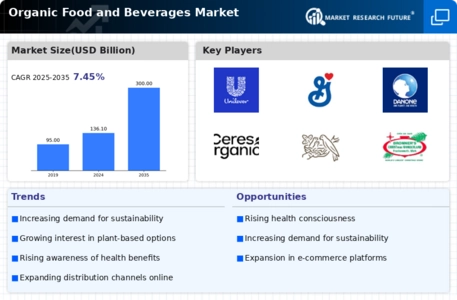
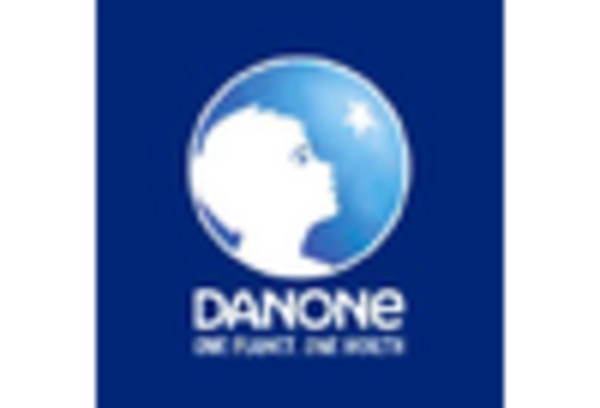
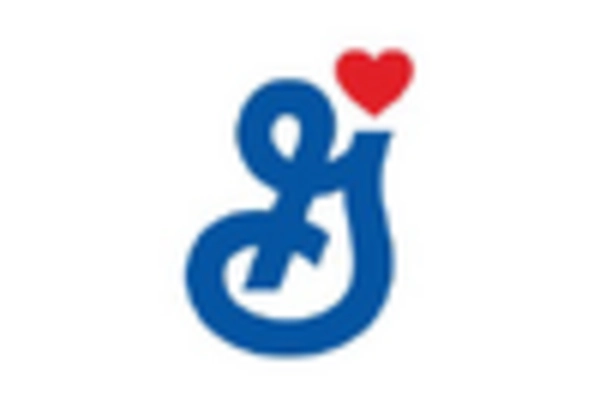
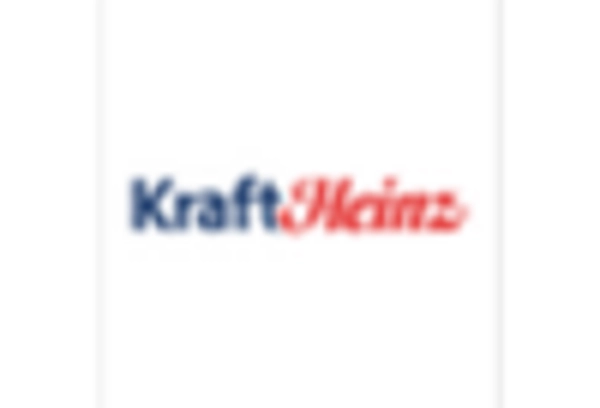


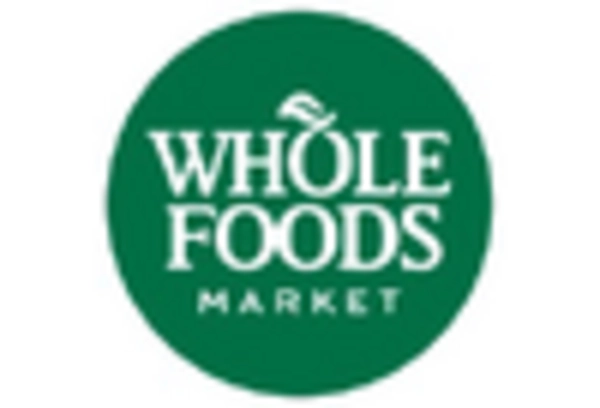









Leave a Comment